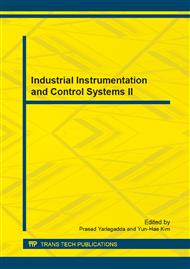p.1356
p.1361
p.1366
p.1370
p.1374
p.1379
p.1383
p.1387
p.1391
Real-Time Rendering for Large-Scale Underground Mine Scene
Abstract:
A virtual mine system involves masses of laneways and machinery with great number of model data, which restricts rendering speed seriously. In this paper, a rendering algorithm specially developed for virtual underground scenes is proposed. This algorithm considered each laneway as a visible area and applies the cuboid bounding boxes of laneways for the cameras inside-outside testing to determine the cameras position, consequently determined the visible regions and exclude invisible laneways as rendering. To decrease the calculations of inside-outside testing, octree was employed to reduce the detection scope. The experiment results indicated this algorithm was capable of substantially reducing rendering objects and had the obviously faster rendering speed than the conventional rendering acceleration algorithms.
Info:
Periodical:
Pages:
1374-1378
Citation:
Online since:
July 2013
Authors:
Keywords:
Price:
Сopyright:
© 2013 Trans Tech Publications Ltd. All Rights Reserved
Share:
Citation:


